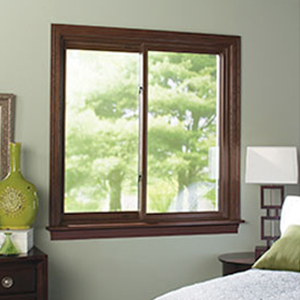Condensation is a sure sign that your home windows should be changed.
Windows are a vital obstacle between the severe, variable weather outside as well as our tranquility, constant house temperatures. Home replacement windows quite often have a fifteen to twenty-year lifespan, so thankfully we don't have to think of replacing them frequently. But knowing when it's time to replace them can be challenging. You could be tempted to try and hold out for another season if you notice the warning signs. But changing your windows now could aid you extend the life of your whole house and keep you as well as your family warm all winter season long. Here are a couple of indicators that your home windows are not ready for the rough winter this year.
Drafty Home
As home windows age, they start shrinking, damaging, and also not closing properly, permitting air from inside your home to spurt. As a result of this, your A/C system battles to maintain your house at a continuous temperature and sends your power expenses escalating. If your house is visibly a lot more breezy or your electrical bills appear to be increasing this fall for no obvious reason, you may wish to have your home windows had a look at.
Challenging to Lock
We delight in having our home windows open when the climate is nice, but they should not be open every one of the time. Throughout the winter when we're not home, your home windows should be shut in place as well as secured. Windows with malfunctioning locks is a major safety threat that need to be corrected immediately to keep your household safe. Usually the lock can be repaired inexpensively, but if the home window is having problem remaining open or closed or is dripping air, it might be best to just set up a brand-new one.
Condensation Forming
The largest sign that you require brand-new home windows is when condensation begins to base on the inside of your home window when it is shut as well as locked. This is indicative of a most likely irreparable imperfection and should be resolved asap to avoid the potential growth of mold in the framework, which could infect other areas of your residence and also trigger major damage when left untreated.
Have you just about had it with your old, breezy windows?
Is this the year you've chosen to finally change your windows? Changing your home windows with new ones comes with great deals of advantages, consisting of an energy effectiveness increase, far better air flow, and far better high quality of light in your home. The National Window Rating Council licenses as well as labels home windows (as well as doors and also skylights) on their performance and also energy performance. When you're purchasing new home windows you'll see these ratings on the NFRC tag. In this week's blog, we'll discuss how to read this tag to make sure you're making an informed decision on your brand-new windows.
Warm Gain and Loss
The very first 3 properties on the label involve exactly how the home window performs with regard to warmth gain as well as loss. here Windows gain and lose heat in three methods:
Straight conduction with the glass.
Radiation of warmth from the sun into your home, and also outdoors from objects in your house.
Air leakage with and also around the window.
U-factor
This is "The rate at which a window, door, or skylight carries out non-solar heat flow." The takeaway here is "The reduced the U-factor, the a lot more energy-efficient the window, door, or skylight."

Solar Warm Gain Coefficient
The SHGC informs us what does it cost? radiation is confessed through the window and also released as warm in the residence. The lower the number, the much less heat is transmitted. However, this doesn't necessarily mean you desire a low SHGC. As an example, due to the fact that a higher SGHC implies the home window permits much more warmth in, you can permit much more solar heat inside in the winter season, which can reduce your heating requirements. In this case, the climate you reside in will play a major factor in selecting an SHGC rating.
Air Leak
This evaluates just how much air the home window lets in relative to a details pressure difference across it. The lower the ranking, the much less air leak.
Sunlight Passage
The following two scores determine just how much light a home window lets right into your house.
Visible Passage (VT).
This number in between 0 as well as 1 measures what portion of the range of noticeable light the home window lets through. The higher the portion, the a lot more light the home window will certainly enable. If you want to employ daylighting in your house, you'll want a higher portion. If you want to minimize indoor glare, you might want a reduced fraction.
Light-to-Solar Gain.
This number is the ratio in between the SHGC and also the VT. "The higher the number, the more light sent without adding extreme quantities of warmth.".